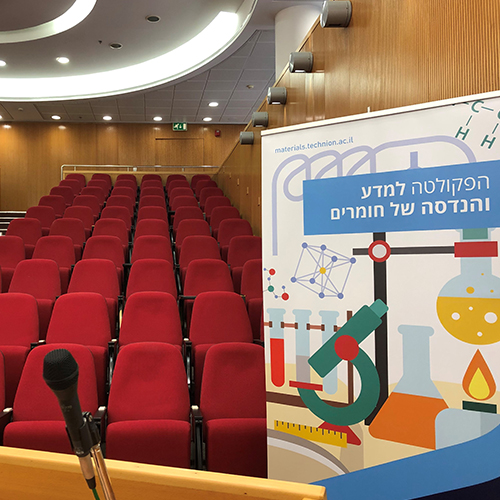
Mr. Saar Shaek - Ph.D. Candidate
16/01/2025
אודיטוריום ע"ש דויד וואנג, בניין מידן, קומה 3
14:30
Lead-free perovskite nanocrystals are interesting due to their nontoxicity and potential for energy applications. However, engineering their optical properties is challenging due to their tendency to support self-trapped excitons – localized excitons with a very small Bohr radius caused by strong coupling with lattice phonons. In my PhD, I have developed a deep understanding of engineering optical properties of double perovskite NCs. I monitored the PL intensity as a measure of the efficiency of exciton energy and emission. It is known that the emission increases dramatically upon doping and alloying of the pristine composition through tuning the exciton-phonon interactions.
I controlled the Stokes shift, which refers to the energy difference between absorption and emission, by alloying and doping with two isovalent dopants. I demonstrated that the two dopants affect the optical properties differently, as ionic sizes influence the exciton-phonon coupling.[1] Further, I engineered the Stokes shift by varying the halide composition since different halides have distinct energy levels. Finally, I have expanded the family of NCs by synthesizing a stable cubic phase of Cs2LiInCl6, which was not stable in bulk form, using two strategies: NCs size control and composition alloying.[2]
[1]S. Shaek, et al., "How Does Local Strain Affect Stokes Shifts in Halide Double Perovskite Nanocrystals?", Chem. Mater. 2023, 35, 21, 9064–9072
[2]S. Shaek, et al., "Stability of Emissive Cubic Phase of Double Perovskite Nanocrystals with Lithium Compositions", submitted.


